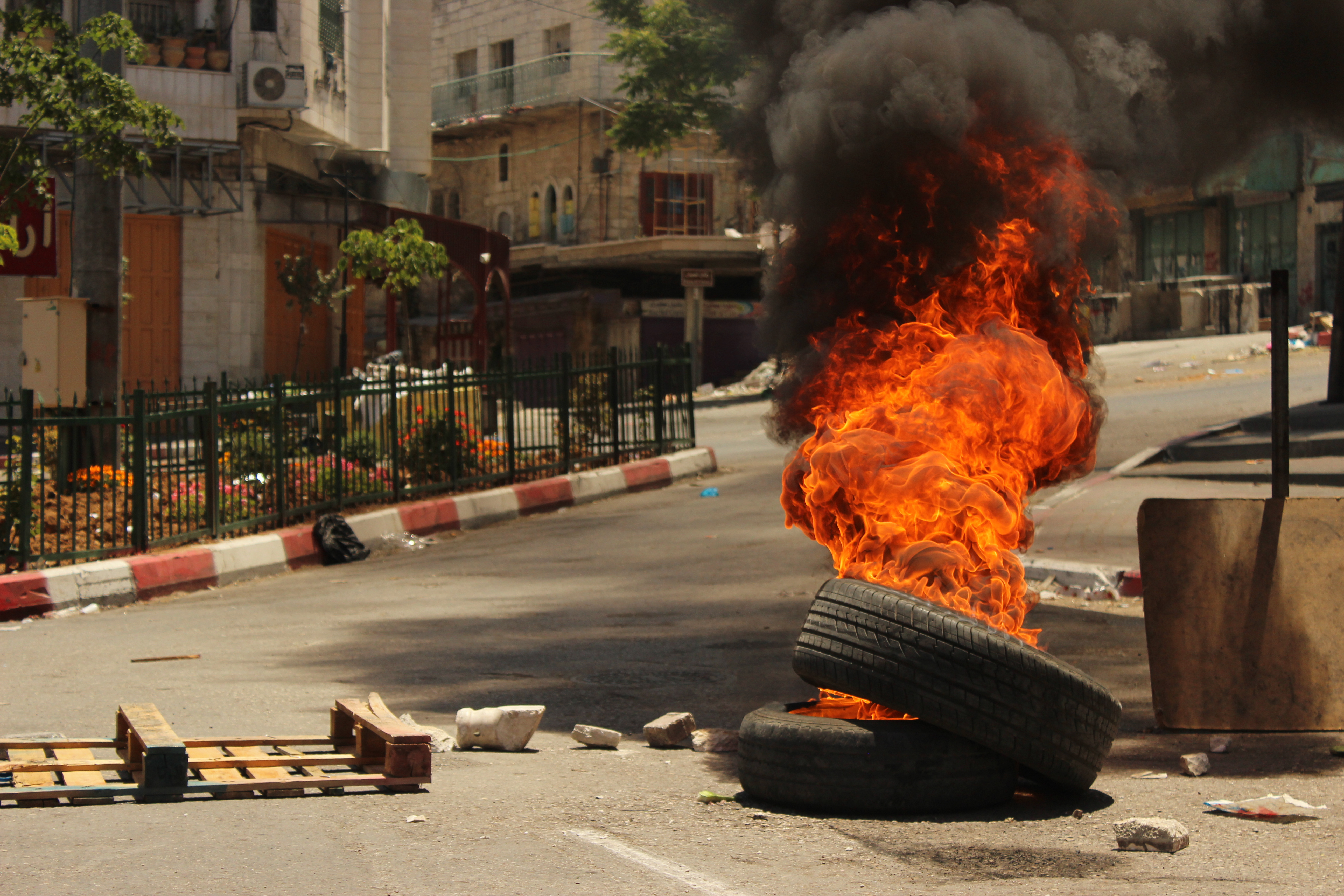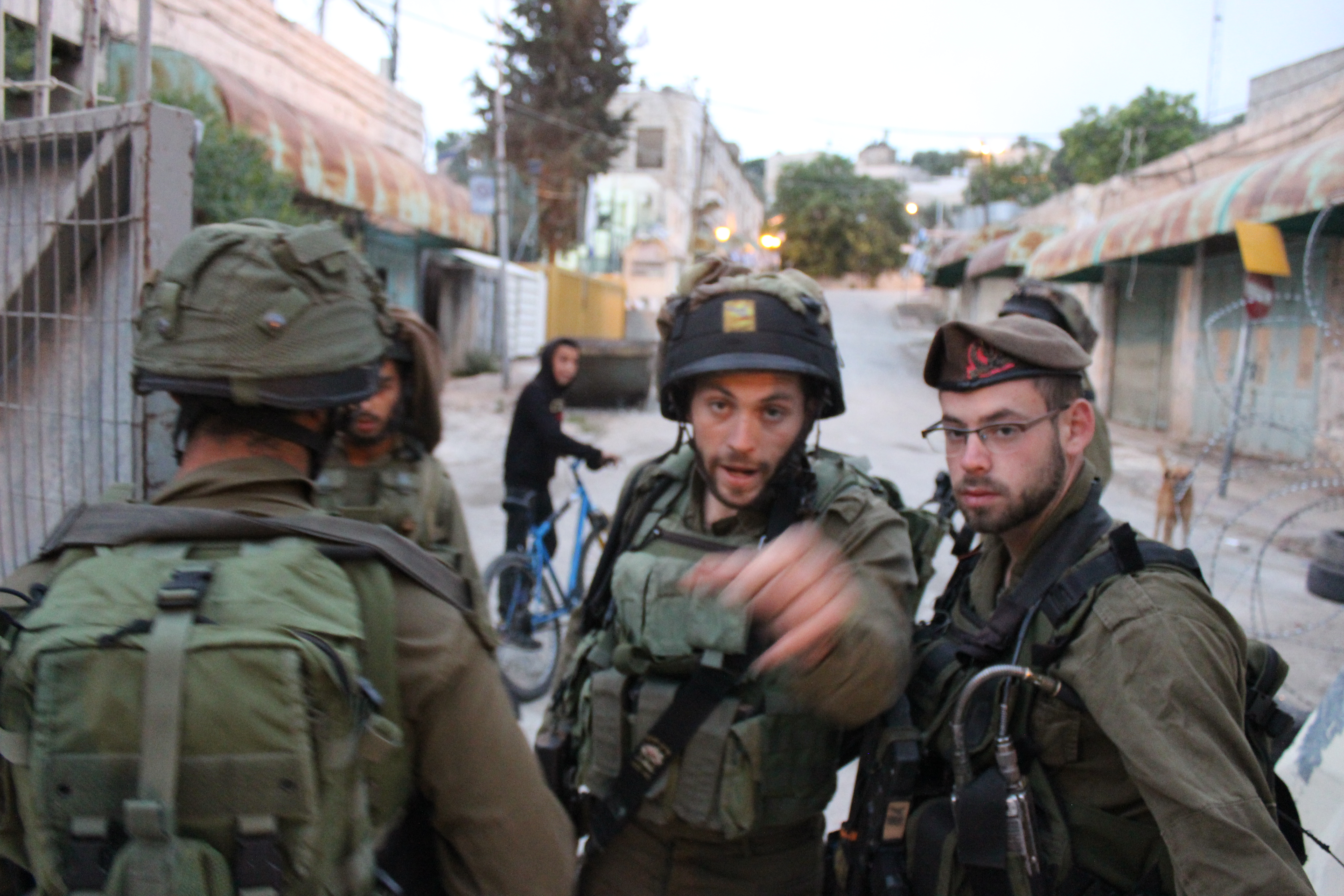Category: Hebron
-
Two shot in Hebron as Israeli forces clash with protesters during general strike
Palestinian protesters clashed with Israeli soldiers and border police yesterday in Hebron, as Palestinians demonstrated in solidarity with the prisoners’ hunger strike. The clash lasted for five hours, with Israeli forces using tear gas, sound bombs, rubber-coated steel bullets, and live ammunition to disperse the protesters. A 15-year old and a 20-year old were shot,…
-
Soldiers detain 12-year old child in al-Khalil [VIDEO]
A 12-year old Palestinian boy was detained by Israeli armed forces this afternoon in Hebron’s Bab al-Baladiyya military base. The boy was apparently targeted by the soldiers, who were interrogating passers-by on his whereabouts. When he was identified, the heavily-armed soldiers quickly surrounded the boy and his father before forcing them into the military base.…
-
14-year old detained in al-Khalil as tensions run high
A 14-year old Palestinian boy was detained yesterday afternoon as Israeli forces conducted a search in Hebron’s Old City. The boy was riding his bike when four heavily armed soldiers began interrogating him. Shortly after, he was taken to Bab al-Baladiyya military base. Prior to the search, soldiers had stopped several men outside the base.…


![Soldiers detain 12-year old child in al-Khalil [VIDEO]](https://palsolidarity.org/wp-content/uploads/2017/05/patrol-in-hebron.jpg)
